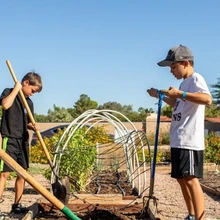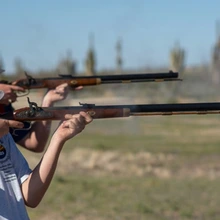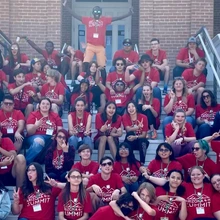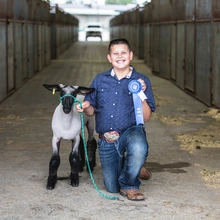4-H
A 4-H club can be no better than the quality of leadership. As one of the officers of your club, you have a responsibility to see that it carries on the best possible program and that it measures up in every way to 4-H Club ideals. You should feel honored that your fellow members have placed their confidence in you. A good 4-H club meeting gives its members a chance to think, plan, and do things together. To do a good job, you will need all the help you can get. This guide is to acquaint you with your new duties and to offer suggestions for making a better 4-H club.
4-H Pinal County

Pinal County 4-H
National 4-H Programs

Ben Downer
State 4-H Programs

4-H youth shooting rifles at the 4-H state shooting championship in 2023.
Ben Downer
4-H Yavapai County

Join 4-H

4-H youth taking silly photo on the steps of Old Main on the University of Arizona Campus in Tucson, AZ.
4-H
Shooting sports programs are a wonderful way to connect youth with safely trained caring adult mentors. Certified volunteers teach safe and appropriate firearms/archery etiquette and provide youth with leadership and competition opportunities. Shooting sports certifications are also a great avenue for volunteer professional development, with opportunities to become certified to teach youth, adult level 1 instructors, and nationally certified level 2 instructors. Young people can also take on leadership roles in clubs as Youth Instructors. Like any project, there are opportunities for members and volunteers to participate at county, state, and national levels. In addition, there are a few key requirements found in shooting sports that other 4-H projects do not have. Read through the information below to learn how to grow a shooting sports program in your county!
4-H Livestock judging is a great program opportunity where youth can strengthen their decision-making abilities, grow communication skills, and develop sound critical thinking and articulate reasoning. Youth that excel in livestock judging cultivate an ethic of research, practice, and work hard to communicate clearly and concisely to judges and peers. Livestock judging is a competitive event centered around the visual evaluation of an animal’s physical traits and at times performance data. The goal is to compare and contrast four animals in a class against each other as well as the “ideal” animal.
Pagination
- Previous page
- Page 9
- Next page


